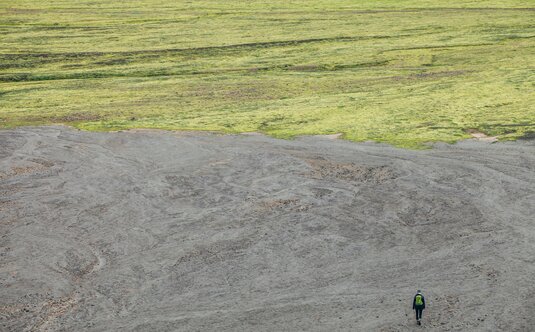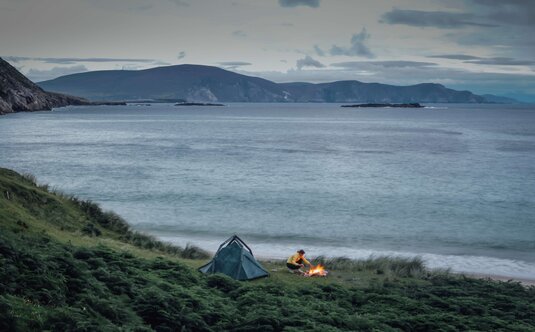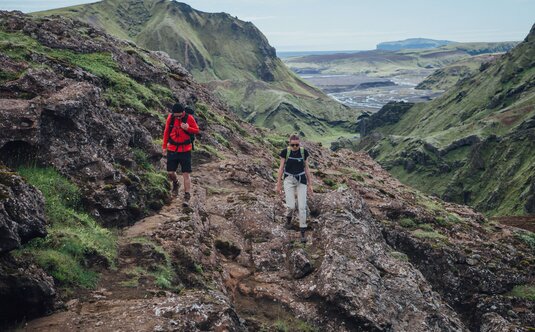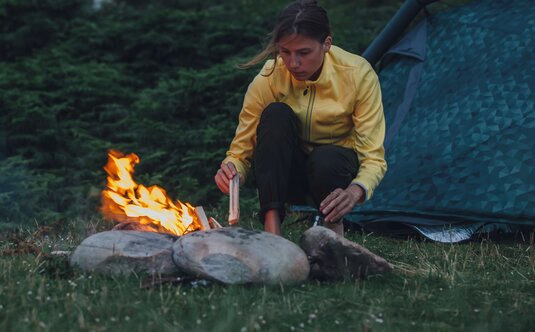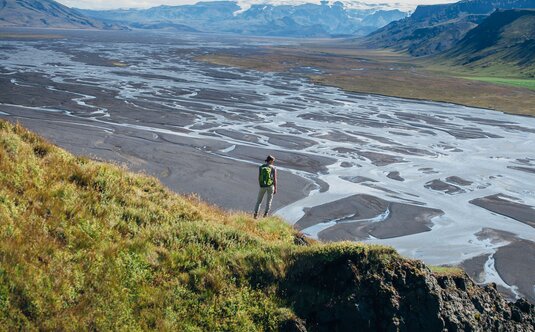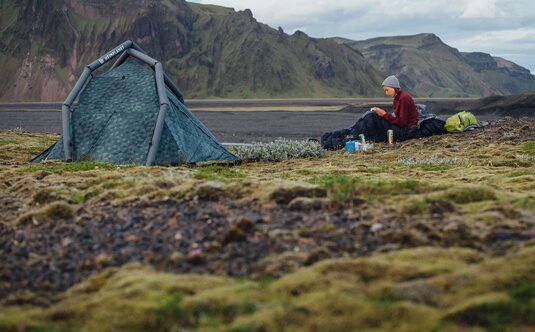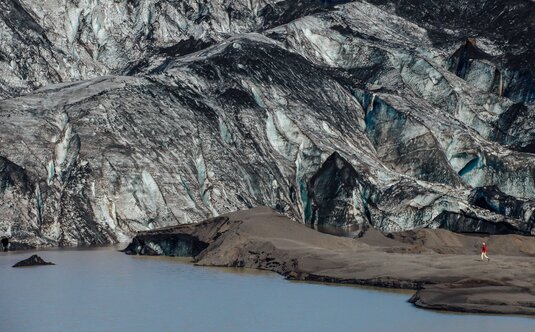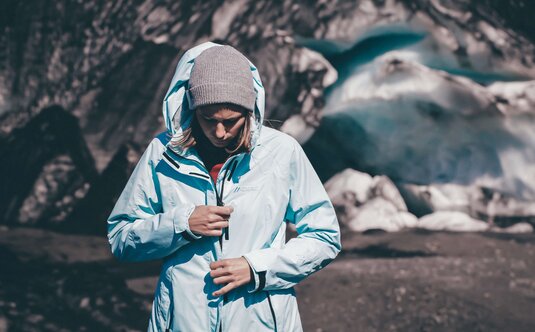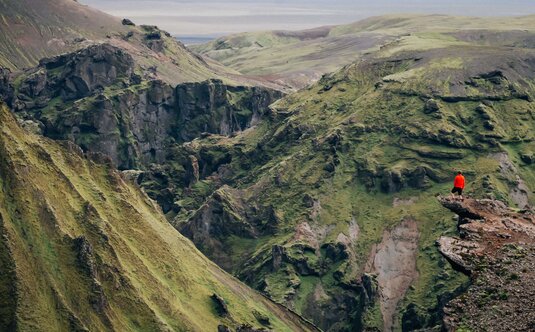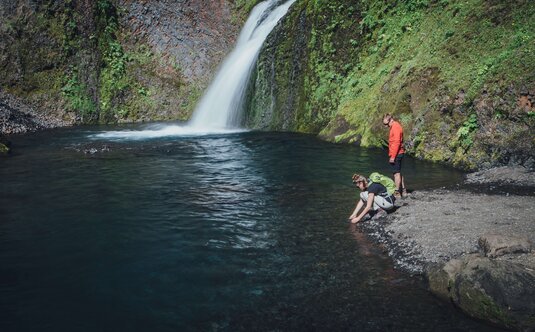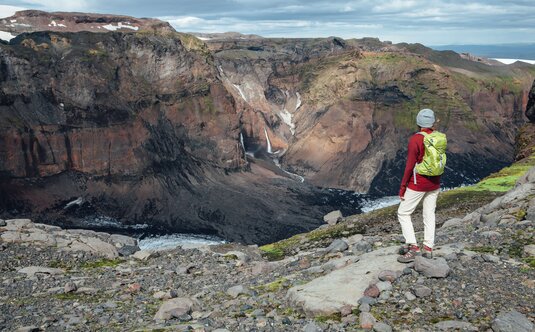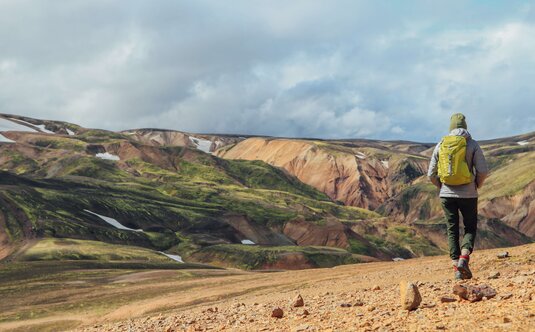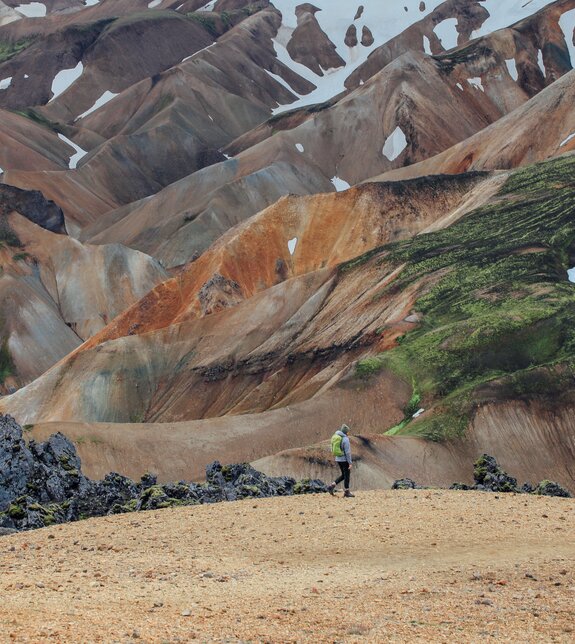
Experience the volcanic island in a whole new way
Iceland offbeat
Black sand surrounds the small bay on the southern tip of the Arctic island. Rugged basalt rocks provide us at least with a little protection from the wind, which is not only ever-present here on the coast. In the distance, green table mountains are wistfully stretching their peaks towards the setting sun to catch the last rays of the day.
Iceland, the barren volcanic island at the edge of Europe, is no longer an insiders’ tip, and hasn’t been for a while. And yet, this destination in the far north embodies an adventurous spirit that has no equal. After the financial crisis, the country pulled itself together and made a combined effort to bring its economy back on course. The tourism industry is booming and visitors from all around the world come here to get an authentic dose of freedom. You get to experience it almost constantly while driving on the large ring road, which winds itself around the entire island.
Geysers, underground magma currents, deep fjords, huge glaciers and vast expanses – Iceland has all this in its repertoire, constituting quite an adventurous plot. During the peak season of July and August, buses take visitors from Reykjavik to places of interest nearby. You need a little creativity and commitment to get away from this flow of tourists. Nevertheless, we wanted to try it out and packed our tent, sleeping bags and camping mats so we could travel around this island of fire and ice as independently as possible.
In the south of the country, glacier lagoons, geothermal areas, black beaches and active volcanoes are beckoning us. From the Ring Road (Route 1), mainly dirt roads fork off into the sparsely populated hinterland and to the well-known hotspots in all of the country. Now, when the island is coming out of its long hibernation, the gravel tracks in the rugged highlands that run from north to south are also open for a few weeks.
There are no bridges nor any secure road segments on most stretches of the road. If you are planning on exploring the island, then you will need an all-terrain 4x4 vehicle and should be prepared for all eventualities such as a sudden change of weather, ford river crossings or even a flat tyre. The road from Reykjavik forks off into the south highlands after a good hour, which is where we decided to go first.
We drive past bizarre lava fields and barren lunar landscapes, slowly infiltrating a surreal world consisting of webbed branches and moss with mesmerising appeal. You have to pass riverbeds and countless potholes until you get to Landmannalaugar in the south highlands, very close to the active Hekla volcano. The fragile ecosystem is under conservation and looks like a colourful oil painting –and is a starting point for many a trekking adventure.
This is also where the Laugavegur, Iceland’s probably most famous trekking route, begins and runs to the coast in several stages. The river here with warm water that comes from hot springs, which can be found practically everywhere in Iceland, is perfect for relaxing after a strenuous day of trekking. Despite the remote location, you are rarely alone in Landmannalaugar in summer. The highlands have also become one of the top tourist spots in Iceland.
It is not as crowded in the west, or rather in the West Fjords. Far out, where the deep fjords eat into the peninsula, we find secluded bays and beaches in vibrant colours where very few tourists stray. The journey over miles of gravel roads to this forgotten paradise alone is worth the trip. The Atlantic’s rough face does not spare the country from the brute force of nature.
Many tracts of land on the rugged peninsula are abandoned, without any signs of civilisation in the fjords. The perfect spot for us to get to know Iceland’s coast in an authentic way. Fishing, a campfire on the beach or a relaxing soak in one of the many hot springs along the West Fjords shape our day.
The small town of Akureyri is the perfect starting point for an expedition to the far north of the island, which is where we refill our supplies for the next few days. Not far from here, you can explore the northern part of the Vatnajökull National Park with its countless hiking trails.
Beaten paths take you deep into a landscape with its own diverse microcosm where you will come across very few people. We pass through the Myvatn area with a lake of the same name as we head towards the east. A combination of water, desert and steaming volcanic landscapes make this region completely unique. It smells of sulphur and dark blue mud holes bubble on the surface everywhere. Hiking through this environment gives you the feeling of being in a very strange world on a distant planet.
Wet from the rain, the dead straight road runs through the landscape with familiar-looking vegetation, the many trees on the roadside reminding us of home. The surrounding mountains are reflected in the puddles. The route back towards the south is long. We easily find secluded spots where we can camp. The fjords on the eastern coast are also sparsely populated. We go past the famous glacial lakes and get to Skaftafell National Park whose mountains give you a clear view of the foothills of Vatnajökull.
It’s not that far back now to Reykjavik, the starting point of every Iceland trip. The pegs of our tent bore into the black sand of the small bay one last time and we look back on our trip. Iceland is exciting. And as we lie in our warm sleeping bags, listening to the waves and wind, we both agree that this small volcanic island on the edge of Europe is an amazing adventure in every way.

